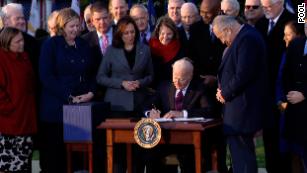The procession moved slowly along the aisles, singing a capella as it shuffled towards the altar. The choir, dressed in maroon and black robes, were followed by the ushers with their red bow ties and white gloves. At the rear were the ministers dressed in white and gold.
Sunday communion at the Mother Emanuel AME church in Charleston had begun in a sombre mood.
With his head bowed, the Rev Edward Ducree led the morning prayer. “We pray especially this morning for those who are down with heavy burdens,” he said, as an organist played a quiet accompaniment. “We pray for those who are still in pain for the horrific events that happened here a little over a year ago, and we pray for this congregation for indeed we are still in mourning.”
In the basement beneath the assembled worshippers’ feet, in June last year, 22-year-old Dylann Roof, an avowed white supremacist, had sat with the congregation’s weekly Bible study class. After an hour of listening to the black worshippers talk, according to a federal indictment, Roof pulled out a Glock pistol and opened fire, killing nine people, including the church’s pastor Clementa Pinckney, uttering racial slurs as he fled.
The hate crime, one of the worst in contemporary American history, left the country in grief. On Wednesday, opening arguments in Roof’s federal trial, where he is charged on 33 counts including hate crimes and murder, are to commence. Prosecutors will seek the death penalty. A state death-penalty trial is scheduled to follow the federal trial.
Some in the Mother Emanuel AME congregation are divided over what outcome they are hoping for.
Others fear Roof’s trial will revive horrific memories they are still struggling to come to terms with, just as the nation reckons with a resurgence of white supremacy and racialised rhetoric under Donald Trump, the incoming president.
Sat in the church’s basement, where a large crucifix bearing the names of the nine murdered victims stands in a sanctuary metres from the site of the killing, 82-year-old Lillian Green and her 63-year-old daughter, Cheryl Lucas, recalled memories of the place they have worshipped in their entire lives. They knew each of those killed “like family”, and had risen through the church’s volunteer ranks together.
Both were due to attend the Bible study class on the evening of 17 June last year, but after the class was delayed they made the rare choice to skip it, a decision which probably saved their lives. When the pair returned to class in the weeks after, a group of white students from the local college had come in to offer their support. For the first time, both felt unsure whether to welcome them in.
“We were paranoid,” Lucas said, fearing that the white students might also have been targeting the church. “I had to work on my faith again because this was so personal.”
While Lucas wanted to see Roof face the death penalty “for justice”, Green had decided the potentially drawn out legal pathway would simply be too hurtful. “It’ll be 10, 20 years of appeals going on. It would be too much,” she said. Roof’s attorneys had offered guilty plea in exchange for life in prison, which was rejected by federal prosecutors.
Researchers at the University of South Carolina who examined race relations in the state a year after the mass shooting found only 30.9% of black South Carolinians supported the death penalty for Roof, compared with 64% of white residents. A number of the victims’ family members have indicated they would rather see the 22-year-old face life in prison, while the AME church itself is officially opposed to the death penalty.
The spectre of government executions looms over the black community in this former Jim Crow state. It is only seven decades since 14-year-old George Stinney was placed in the electric chair following a murder trial for the deaths of two white girls in Alcolu that was laced with racial prejudice. In 2014, his conviction was vacated.
A number of congregants on Sunday recalled that Denmark Vesey, the church’s founder, was hanged along with over 30 of his supporters in 1822 for orchestrating a failed slave revolt.
But in a powerful opinion piece for the Charlotte Observer, Malcolm Graham, a North Carolina state senator whose sister Cynthia Hurd was gunned down in the attack, wrote that for Roof to escape death would be “like validating a prejudice that goes like this: Only blacks who commit heinous crimes against humanity and our country deserve to be executed.
“It is saying: White lives matter more and that white victims matter more. My sister’s life mattered. The lives of the eight innocent souls who died by her side mattered.”
As the Rev Eric Manning, the church’s newly appointed pastor, delivered Sunday’s sermon, congregants looked on in expectation, hoping for guidance and reassurance. Manning had spent the past week at the US district courthouse just a mile down the road, watching Roof as he clumsily attempted to act as his own counsel during the trial’s jury selection phase.
“God is with us in the midst of our trials,” Manning thundered, shaking and mopping his brow as the church’s drummer accompanied him. “It’s not going to be easy, beloved, but God’s peace is going to be right there. Memories may be opened, but God’s peace will be right there.”
Some in the pews stood up and raised their hands towards the roof.
In an interview after the service, Manning, who was flanked by a security guard, said that the “distasteful rhetoric” of Trump’s election campaign, with its nods to white nationalism, had given the church further cause for concern.
The day before Sunday’s service, the KKK, which endorsed Trump’s run for office, had held a rally in the neighboring state of North Carolina to celebrate the election result. The Southern Poverty Law Center documented 701 incidents of “hateful harassment” in the two weeks after the election. And Trump’s nomination of Jeff Sessions as US attorney general has critics pointing to allegations of the senator’s racist past as an Alabama prosecutor.
“That election result did not surprise God, and nor does the fallout,” said Manning. “However, what we in this particular church have gone through means we still have to be vigilant. But we are resolved. There is a resilience that is ingrained in this congregation.”
The post-election atmosphere is a sharp contrast to the shooting’s aftermath, which marked a rare moment of unity in American public life. Survivors and family members had lined up in court during Roof’s arraignment hearing, taking it in turns to stand up and forgive him less than 48 hours after he had committed his act of terror.
During a searing eulogy for Pinckney, Barack Obama led a packed arena in a rousing rendition of Amazing Grace and delivered perhaps the most important speech on race relations of his presidency.
“We talk a lot about race,” Obama said. “There is no shortcut, we don’t need more talk. People of goodwill will continue to debate the merit of various policies as our democracy requires … Whatever solutions we find will be incomplete. But it would be a betrayal of everything Reverend Pinckney stood for if we allow ourselves to slip into a comfortable silence again.”
After the state legislature voted overwhelmingly for its removal, the Confederate flag, which had flown over the South Carolina statehouse grounds since 1961 – initially hoisted as a protest against racial desegregation – was finally lowered.
Bree Newsome, a film-maker and Black Lives Matter activist who had scaled the state house flagpole and temporarily removed the flag before she was arrested in front of the world’s media, held on to hope that the discussion over racial justice started in the massacre’s aftermath and following the fatal police shooting of Walter Scott, an unarmed African American, in the same city just months earlier would continue after the president-elect assumed office.
“Ironically, the election of Trump is likely to ignite more conversations and more protests, because nothing has changed in the circumstances,” she said. “And now it’s more reasonable for us to assume that there’s going to be more police killings, more cases like Walter Scott, more cases caught on video that spark protests.”
On Monday, the trial for Michael Slager, the white officer who shot Scott from behind as he ran away, ended in a mistrial. Standing just metres from the courthouse where Roof will face prosecution on Wednesday, Scott’s mother Judy told reporters she had faith Slager would be convicted at retrial: “I know that justice will be served because the God that I serve, he’s able,” she said.
Roof was found mentally competent to stand trial at the end of November, following a two-week delay that frustrated many of the victims’ families. Last week, clad in his jail-issued grey and white striped uniform, Roof elected to represent himself and during jury selection struggled to keep up with proceedings, at some points asking rudimentary questions of potential jurors, at others failing to ask questions at all.
Many expressed concerns that Roof’s desire to act for himself could lead to him questioning survivors of the attack or victims’ family members during trial. But on Sunday, in a clumsy, handwritten note to the court, the extremist said he now only wished to represent himself during the sentencing phase of trial.
US district judge Richard Gergel approved the request, meaning that, for the short guilt phase at least, Roof will be represented by the experienced death penalty defense attorney David Bruck, whose former clients include the convicted Boston marathon bomber Dzhokhar Tsarnaev.
This desire to assume his own representation, said Robert Dunham, the executive director of the Death Penalty Information Center, makes the death penalty more likely.
“Typically, when self-representation occurs, it’s a mentally ill or severely emotionally disturbed defendant who does not want the jury to see them that way,” said Dunham. “And if that’s the case, then it destroys the fairness of the penalty phase, because the jury is supposed to make an individualised moral determination of the defendant’s culpability, and you cannot make that determination if you’ve never been presented the evidence of emotional disturbance or mental illness.”
Dunham pointed to the recent case of Frazier Glenn Miller, a former KKK leader who was sentenced to death for the antisemitic murders of three people in Kansas in 2014. Miller opted to represent himself throughout the trial and used the platform to engage in a series of deranged racist diatribes, essentially daring the jury to sentence him to death.
Many of the Mother Emanuel AME church’s congregants expressed concerns on Sunday that Roof could be seeking to use the trial as a platform for his racist views, just as Miller had.
Should Roof be sent to the execution chamber, experts warn his status among organised white extremist groups, many of whom distanced themselves from the massacre after it occurred, may be enhanced.
“There’s a very significant risk that if he is put to death he will become a martyr in the pantheon of heroes of the extreme right,” said Mark Potok, one of America’s leading experts on white nationalism and a senior fellow at the Southern Poverty Law Center. “If he were convicted and sent away for life and not executed, I think the effect would essentially be the opposite, because the truth is is Dylan Roof is not much of an inspiring hero, even to the people on the most extreme ends of the radical right.”
(TheGuardian US)






